Austrian Art Deco blond walnut coffee table, 1930s
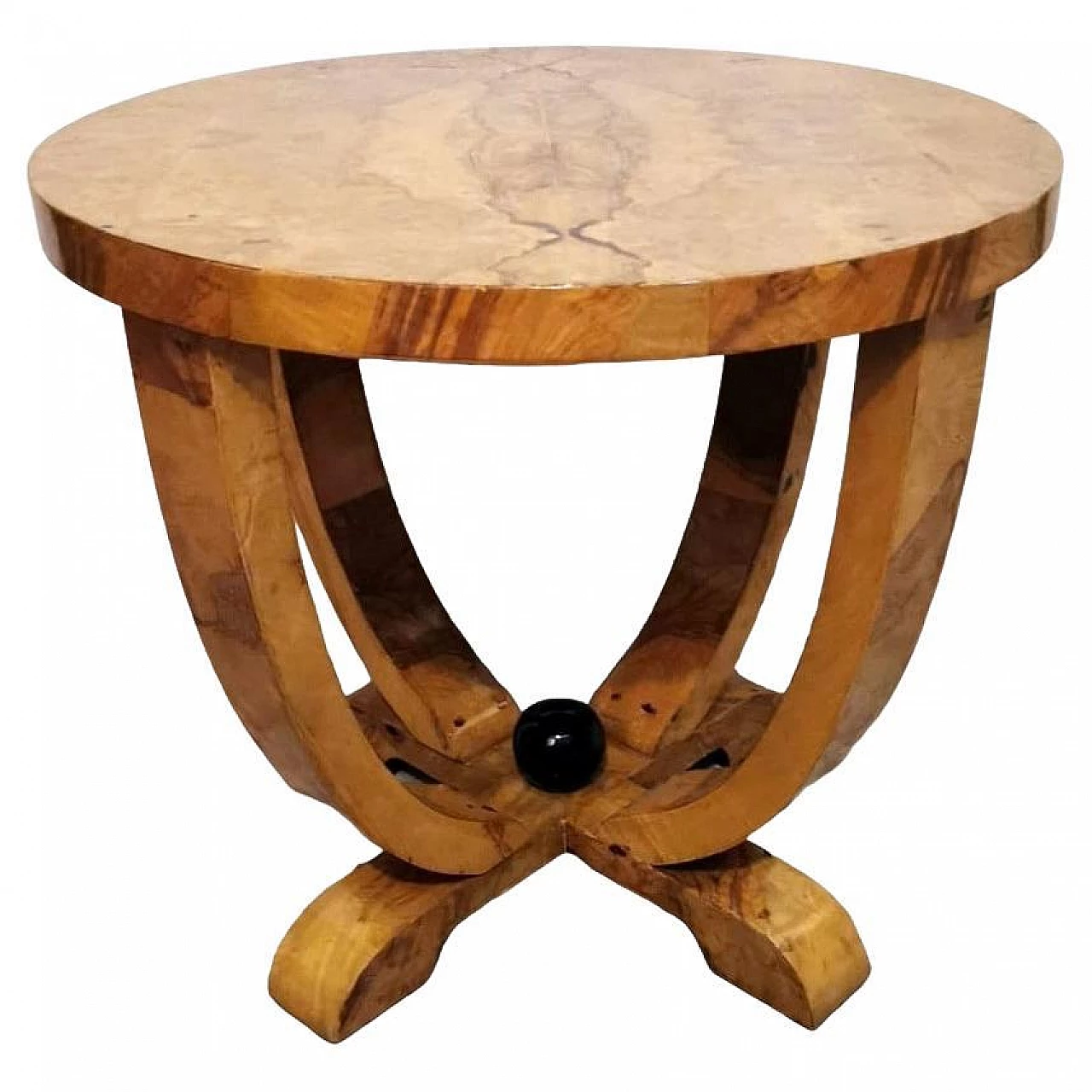
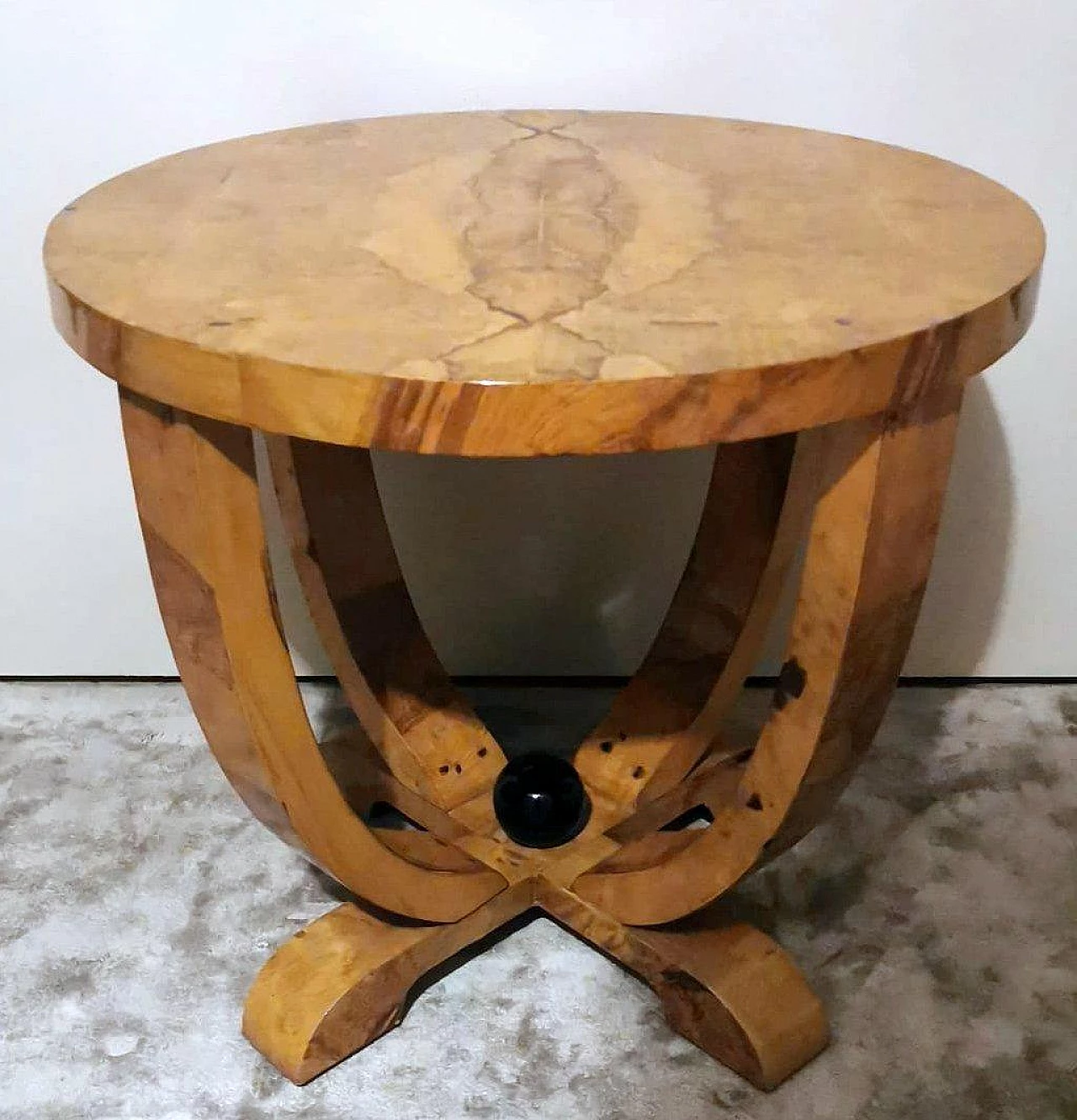
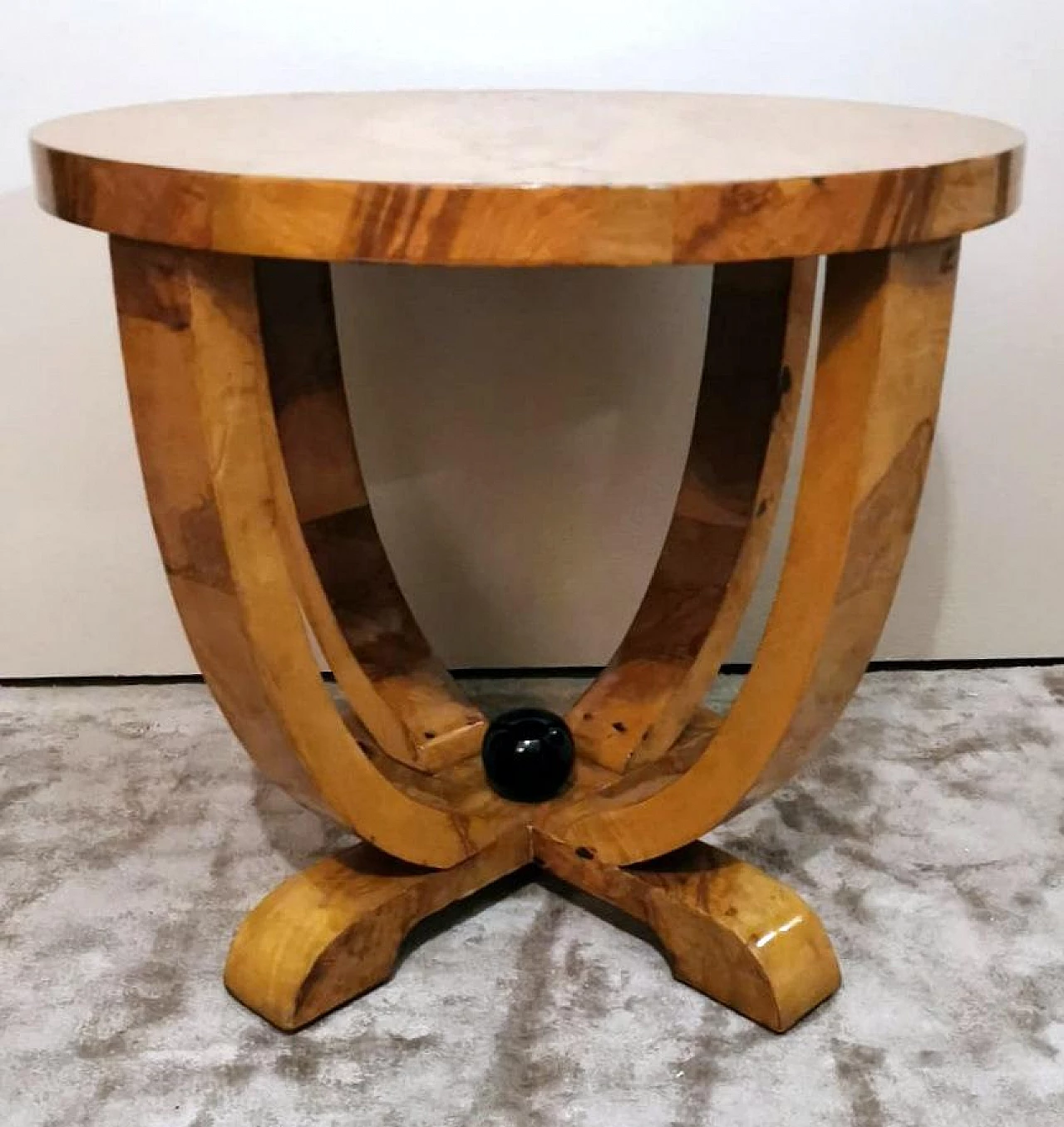
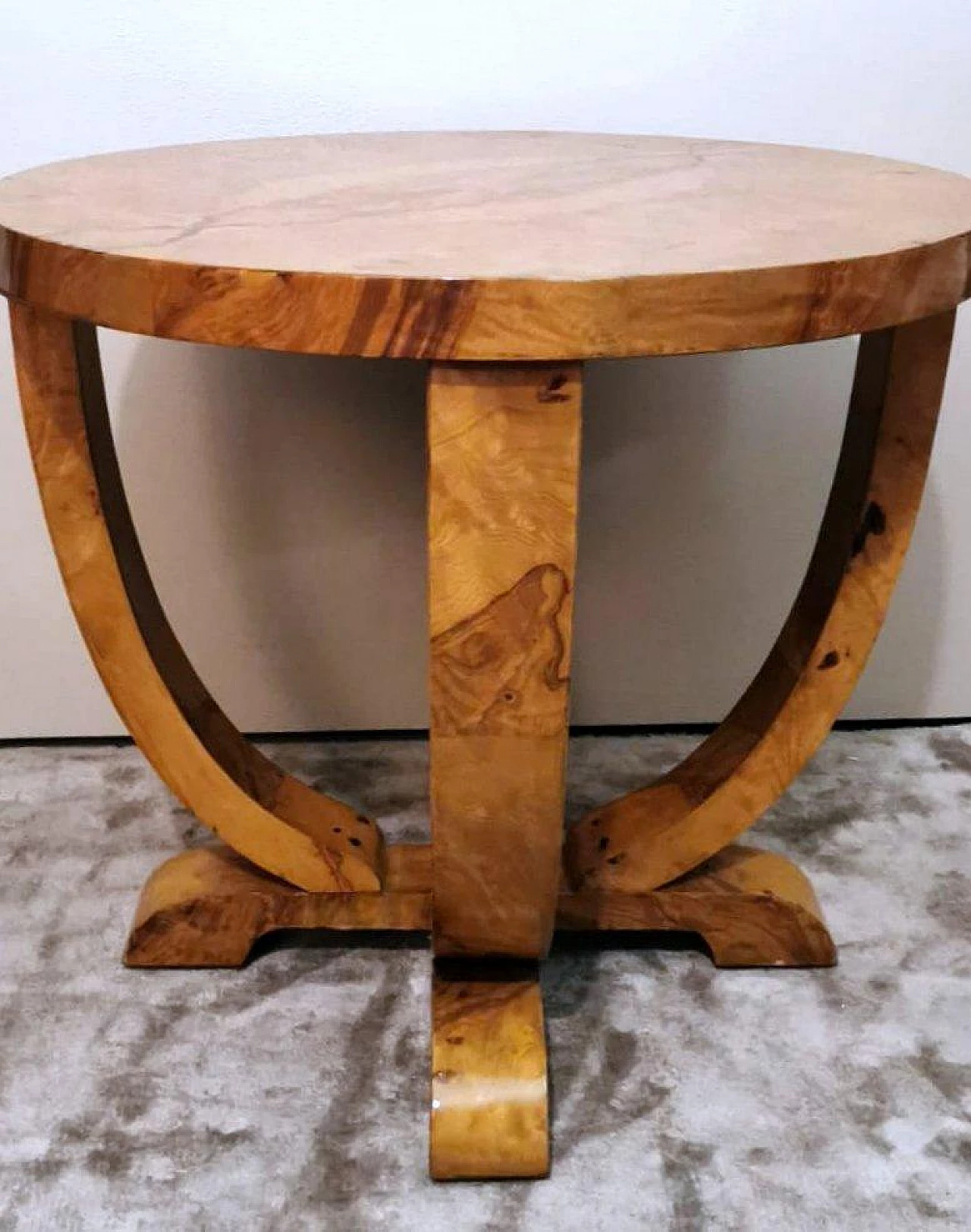
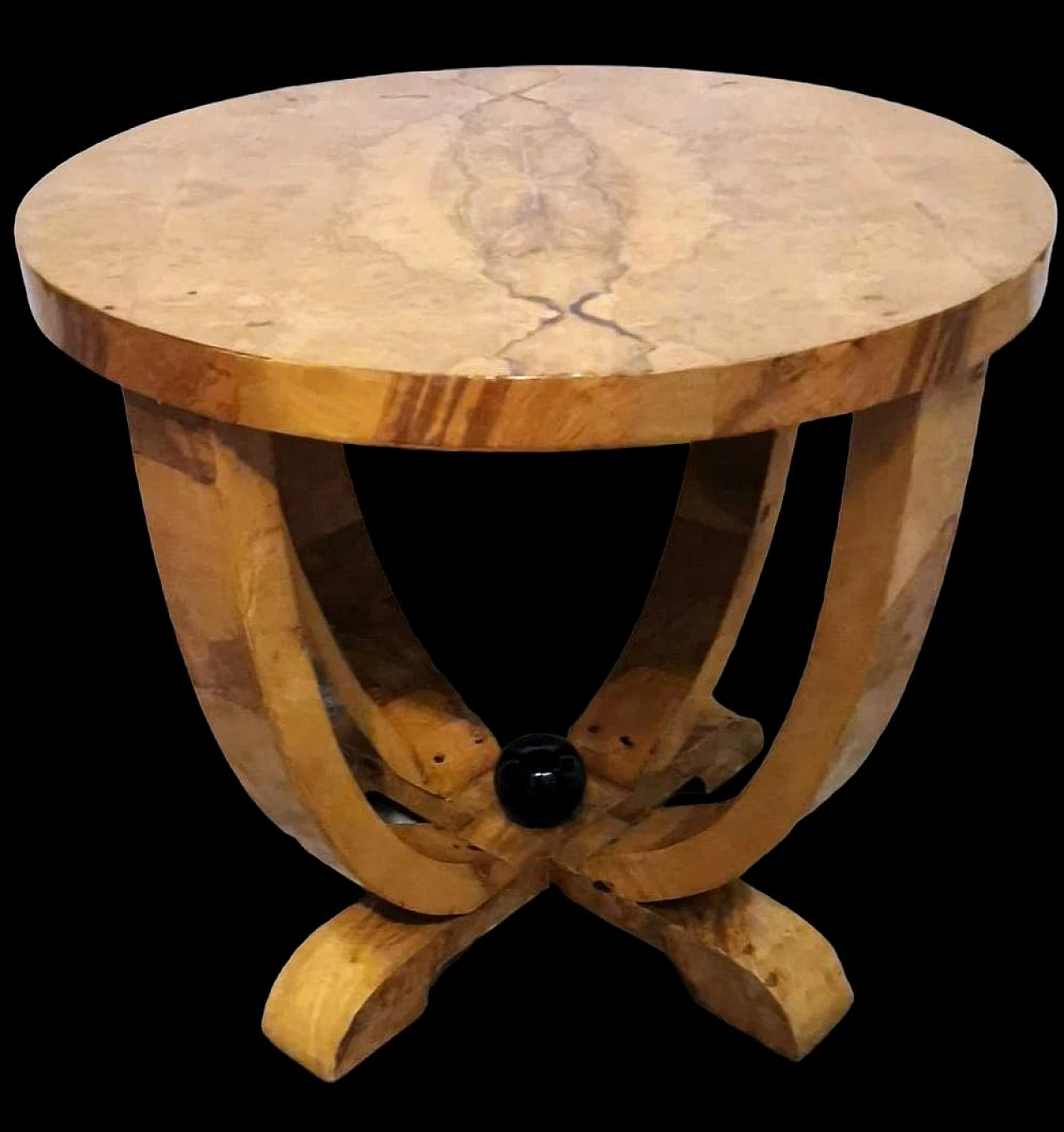
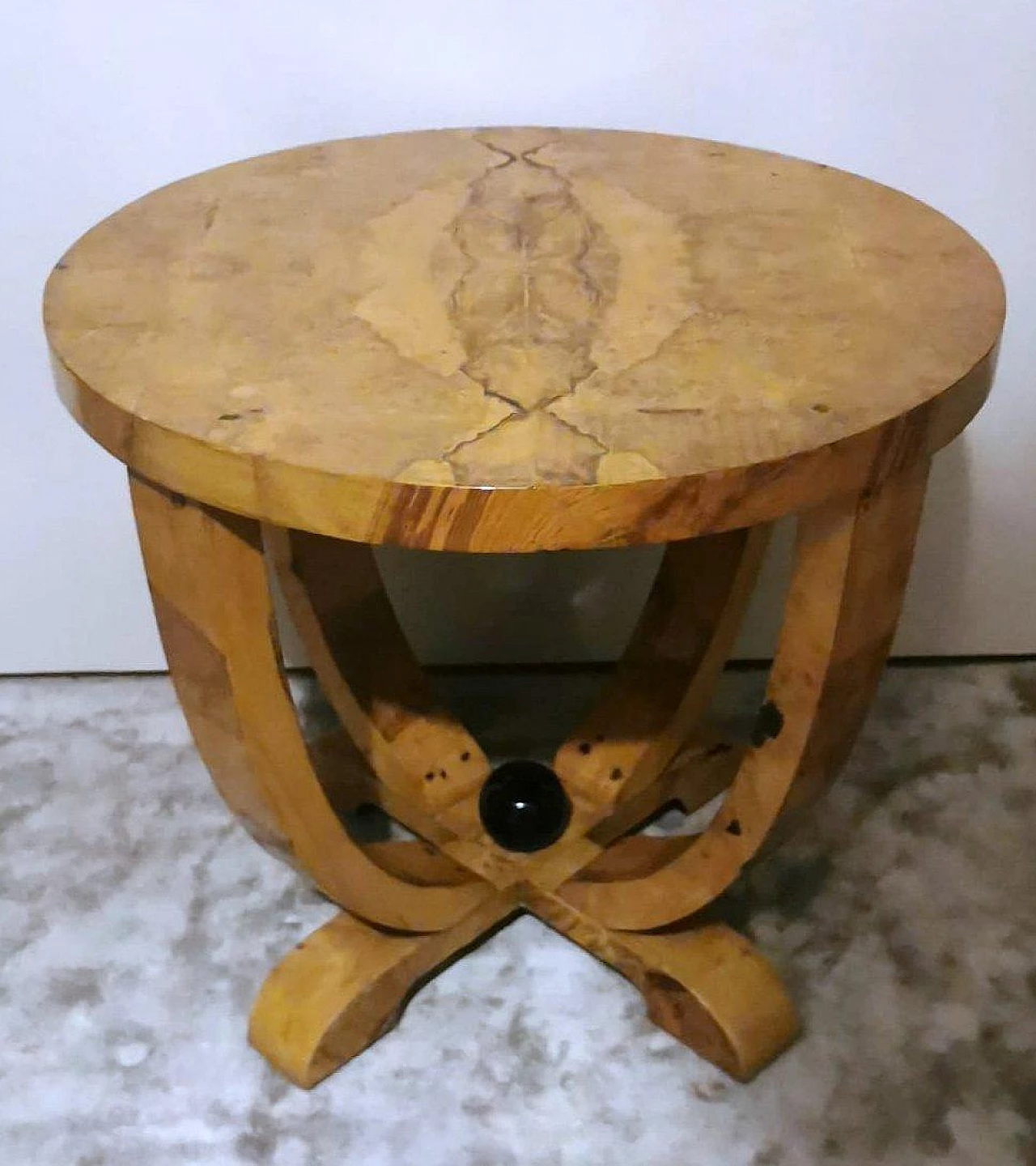
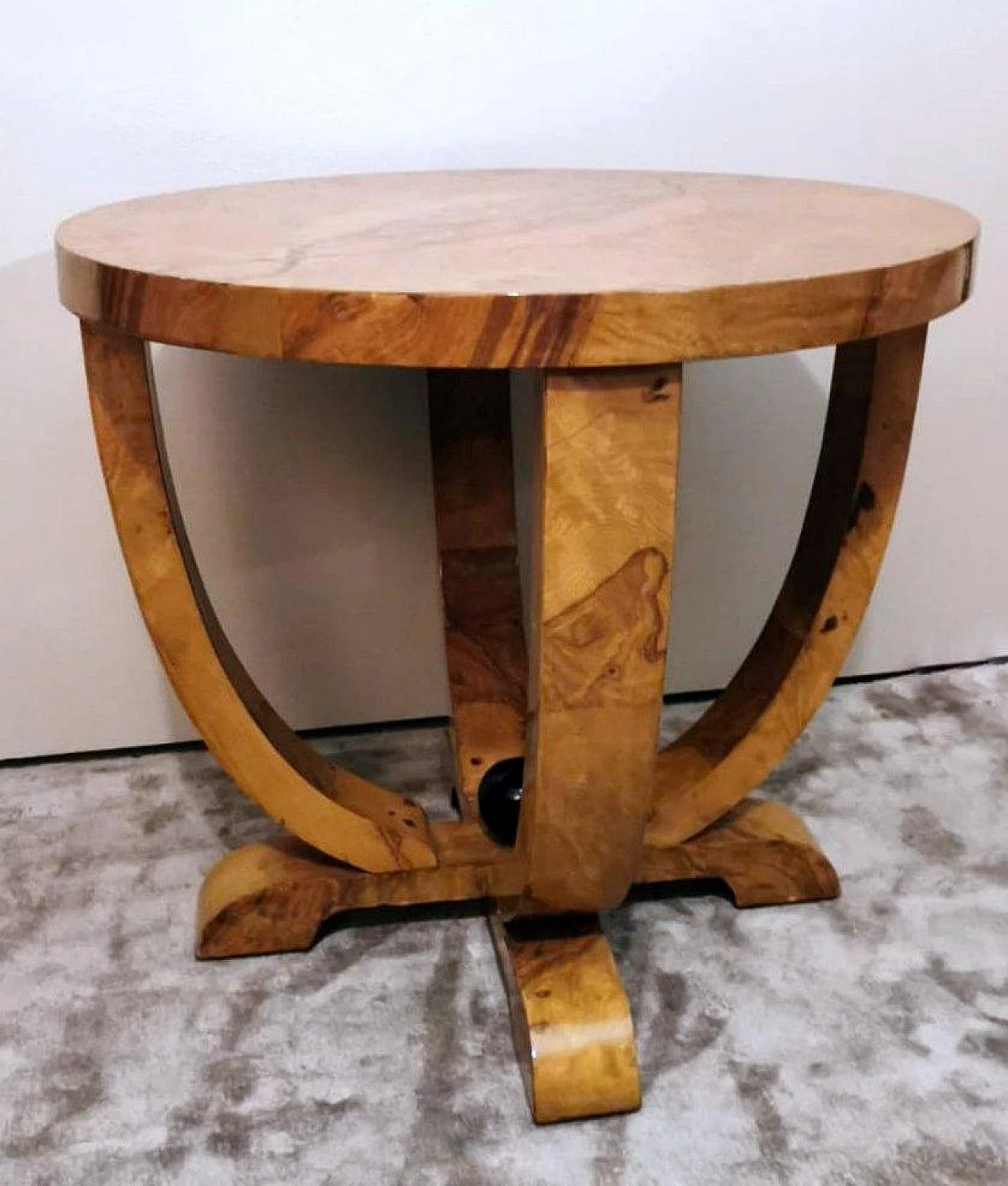
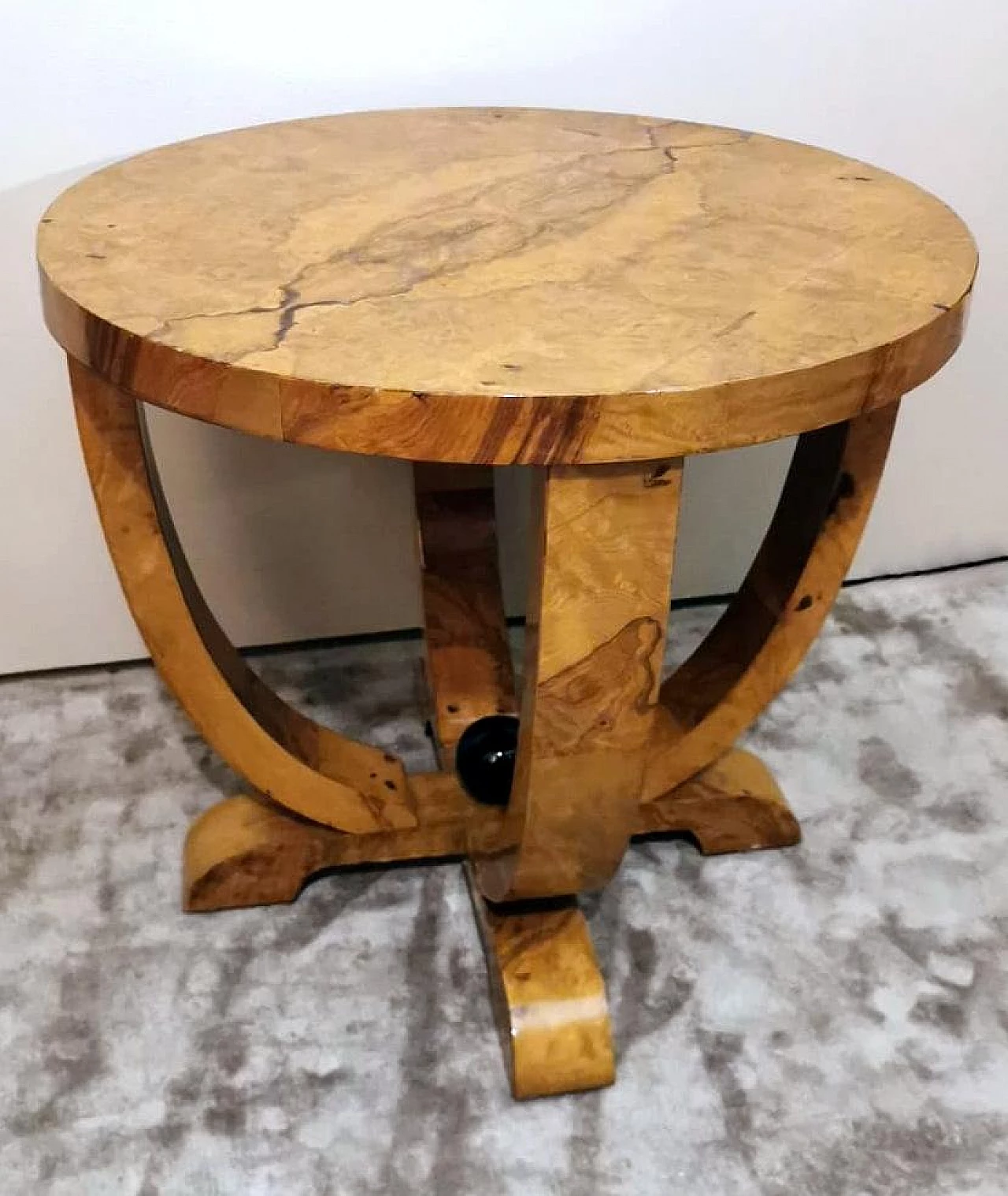
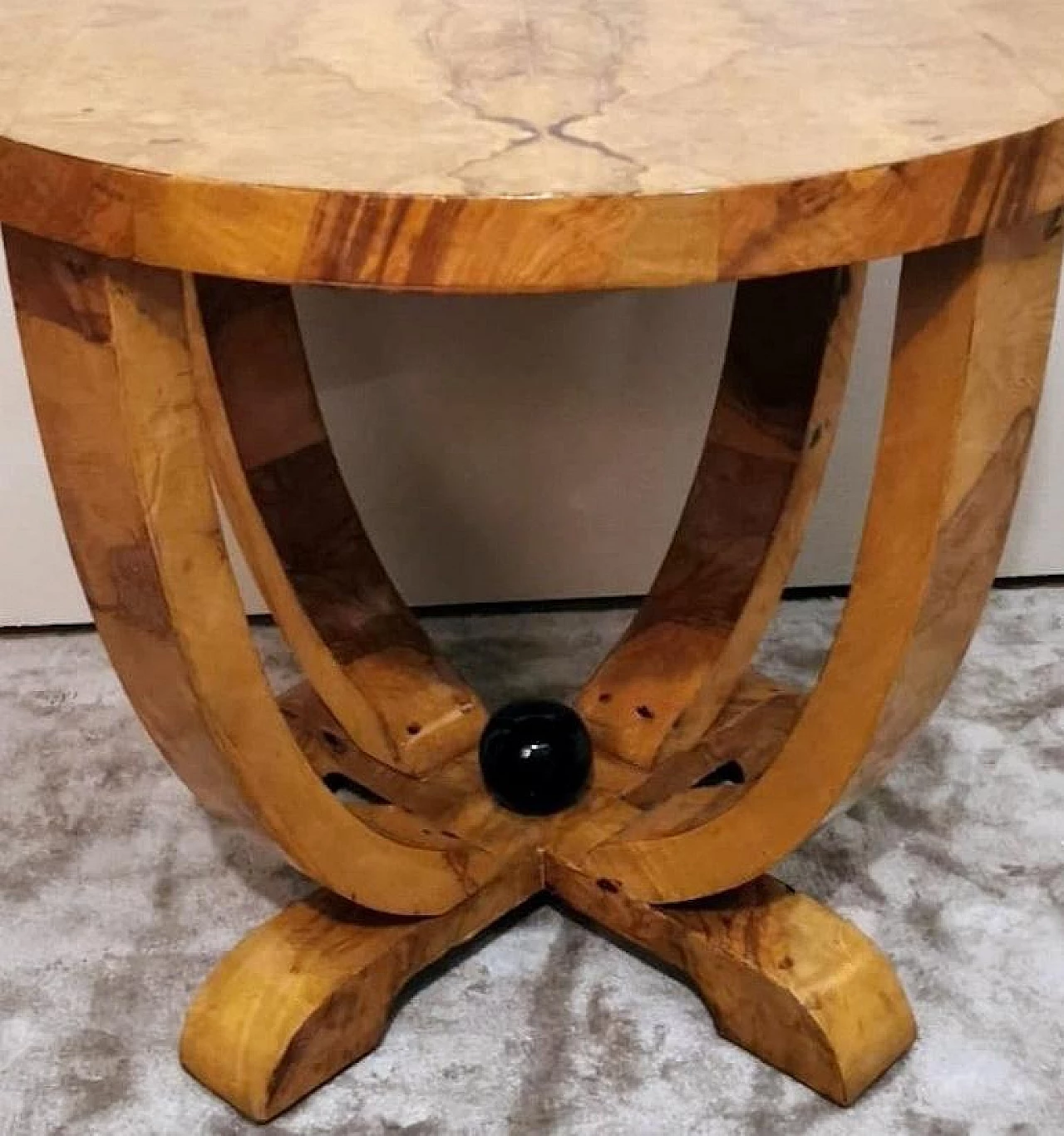
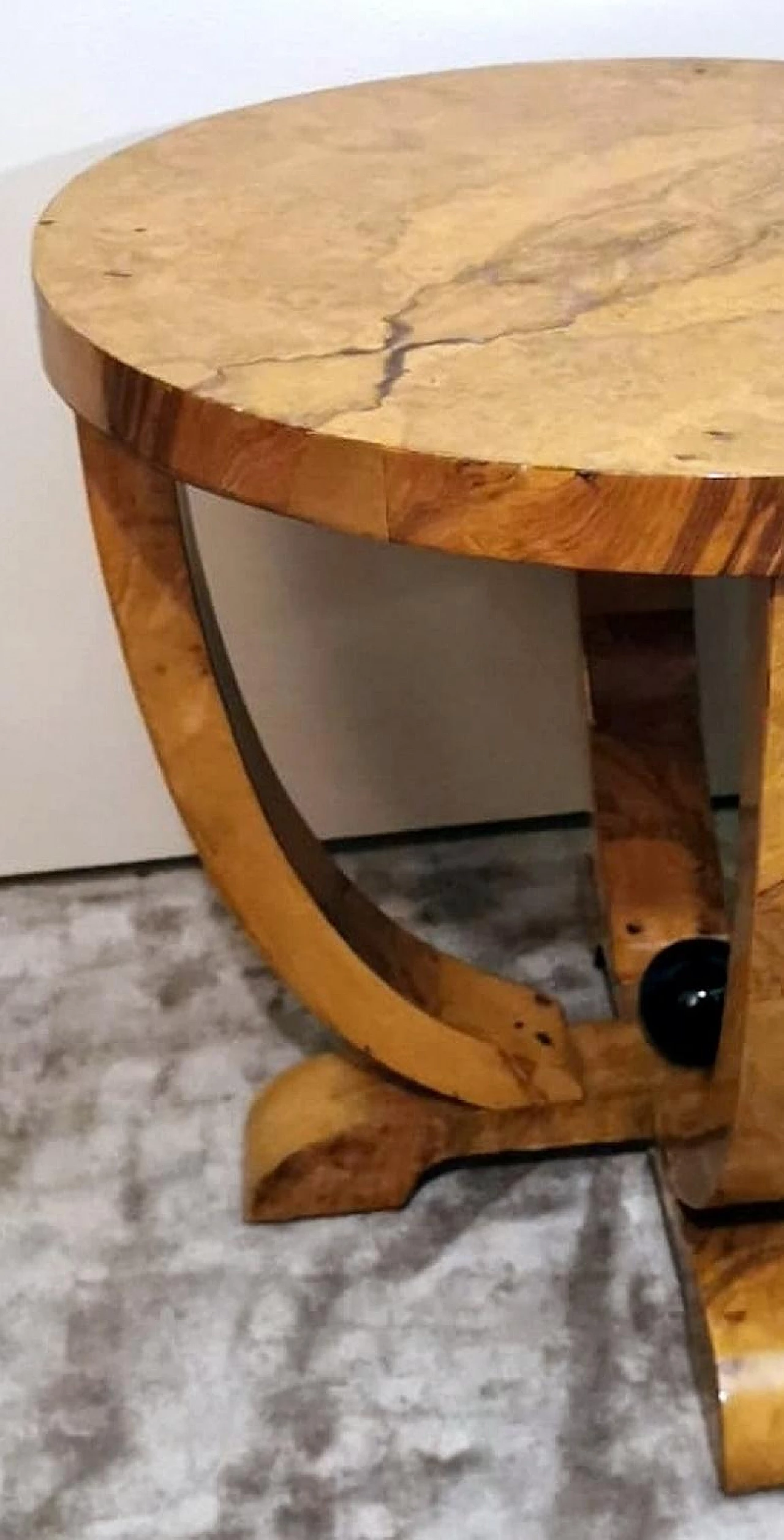
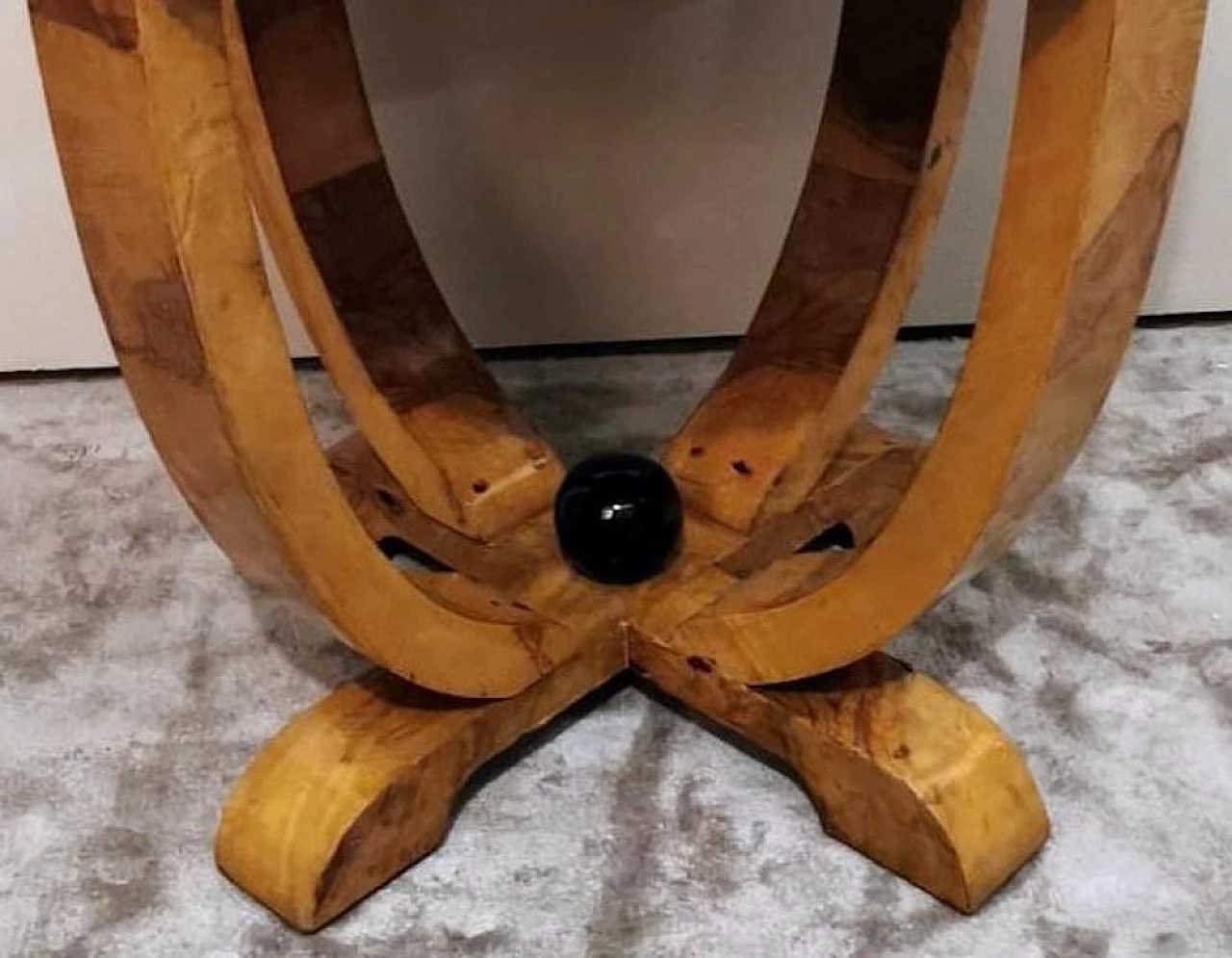
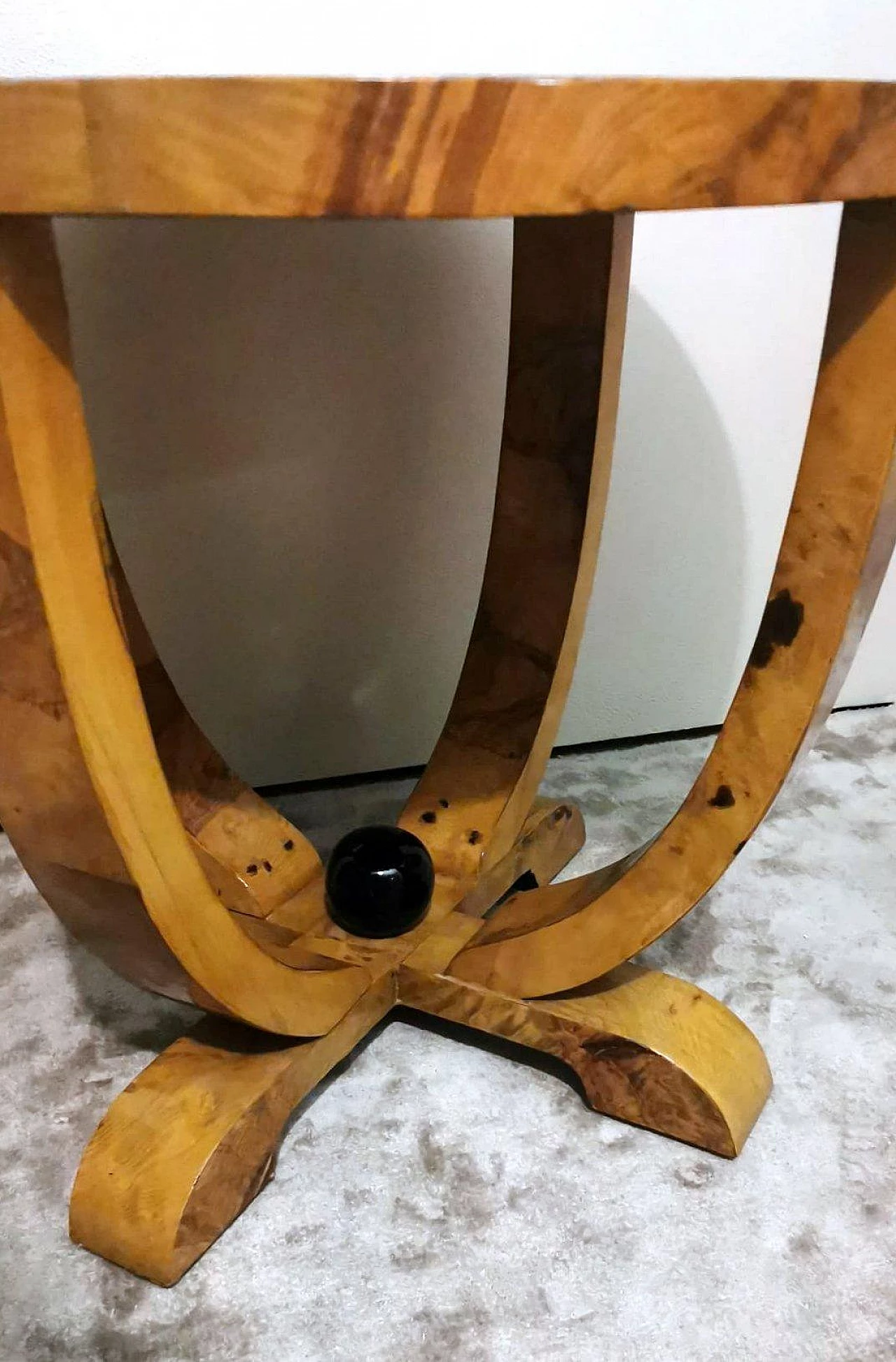
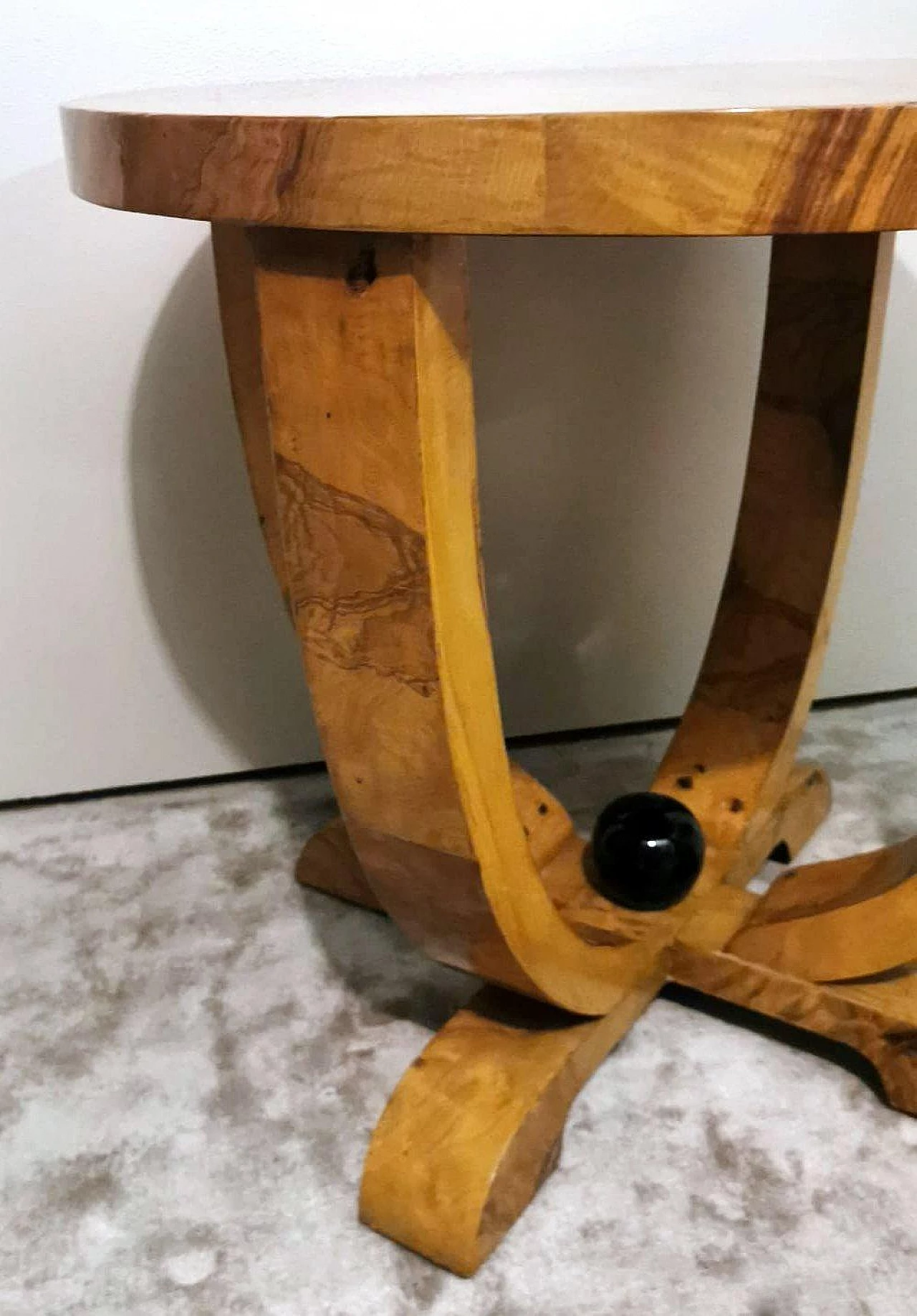
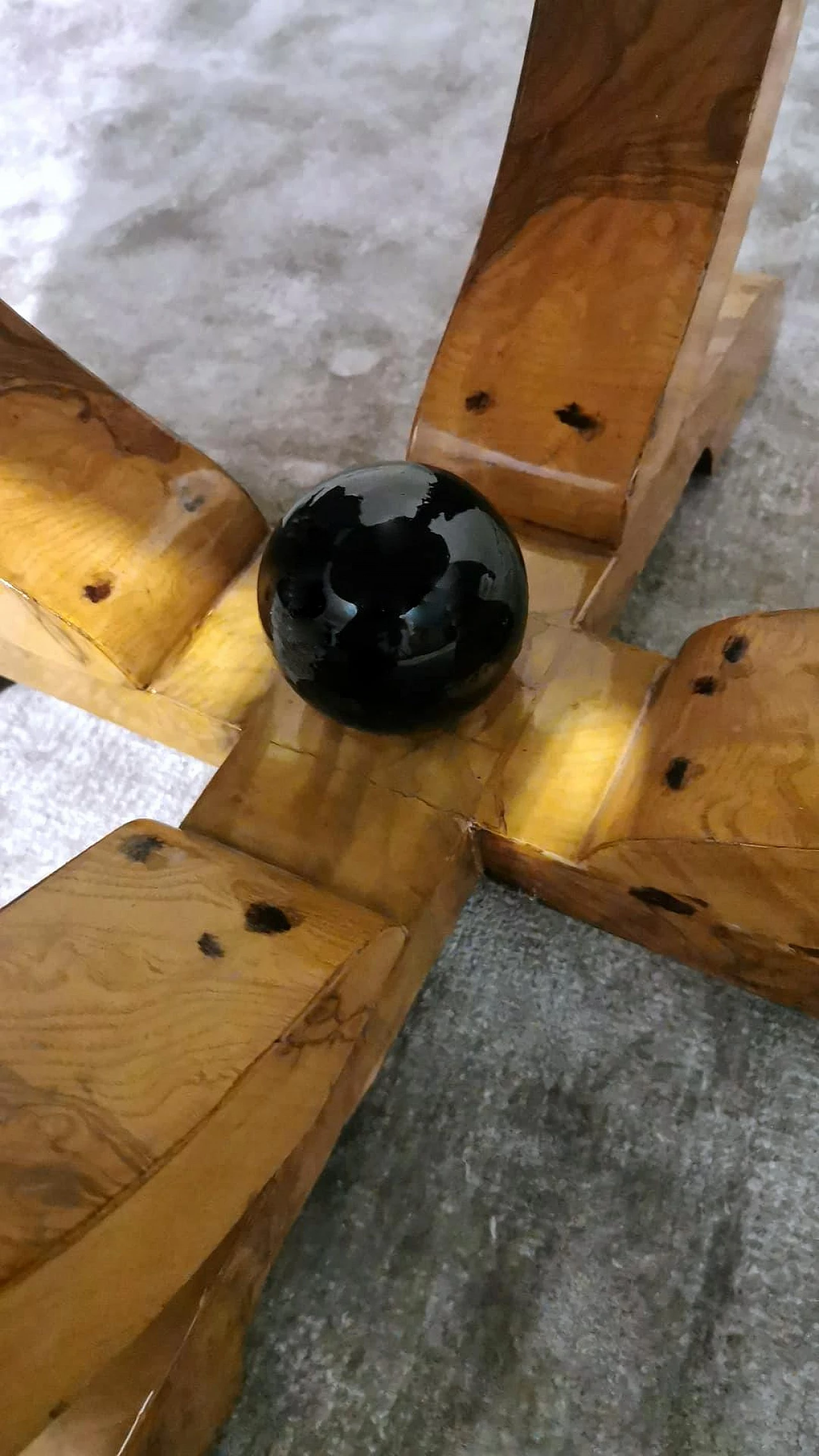
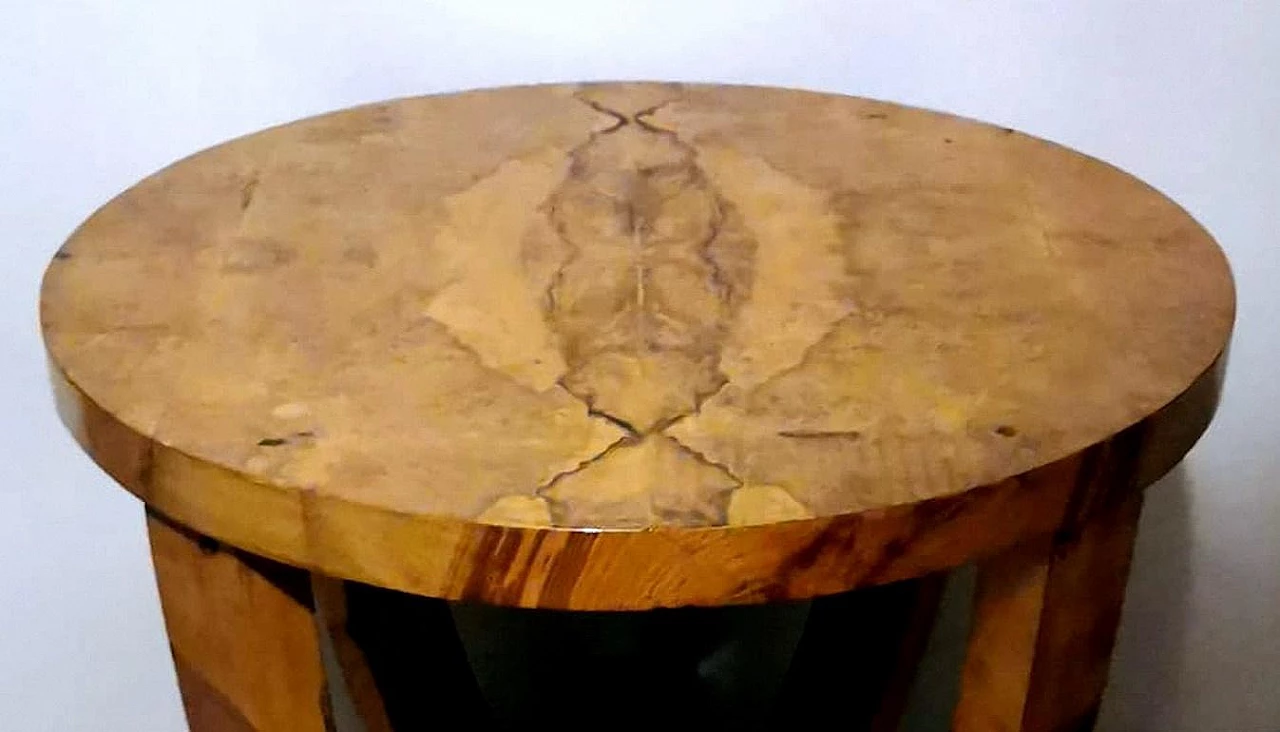
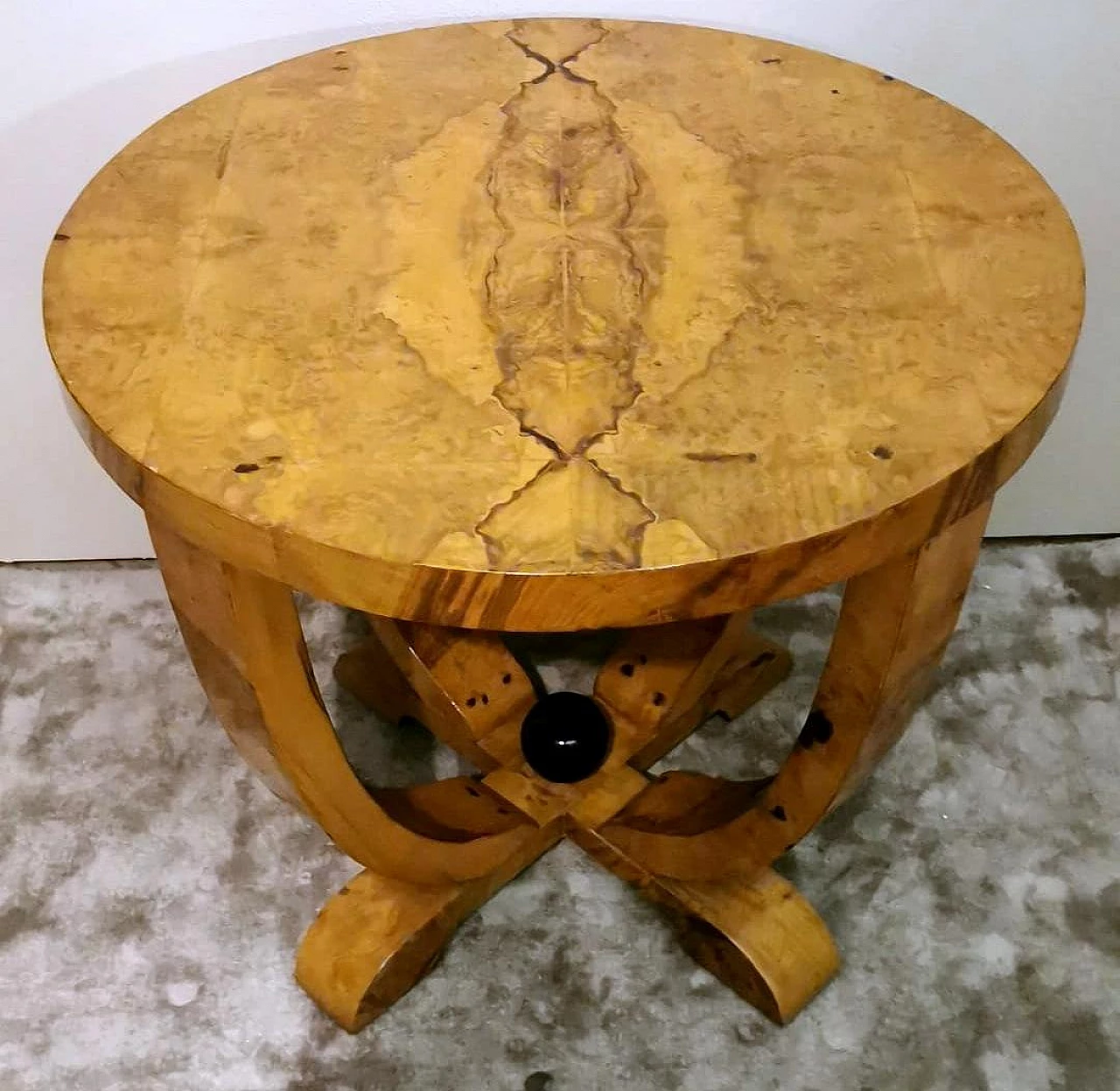
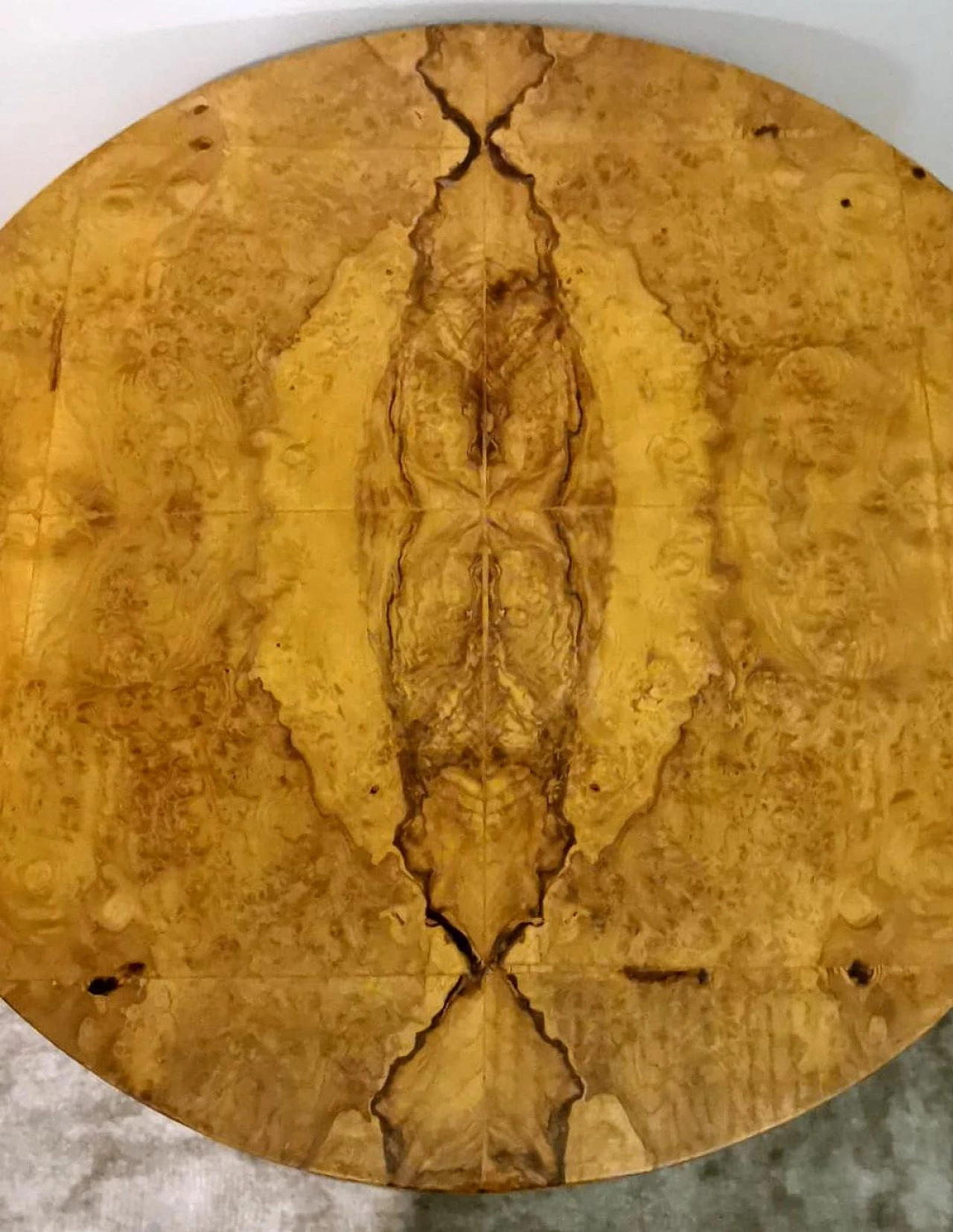
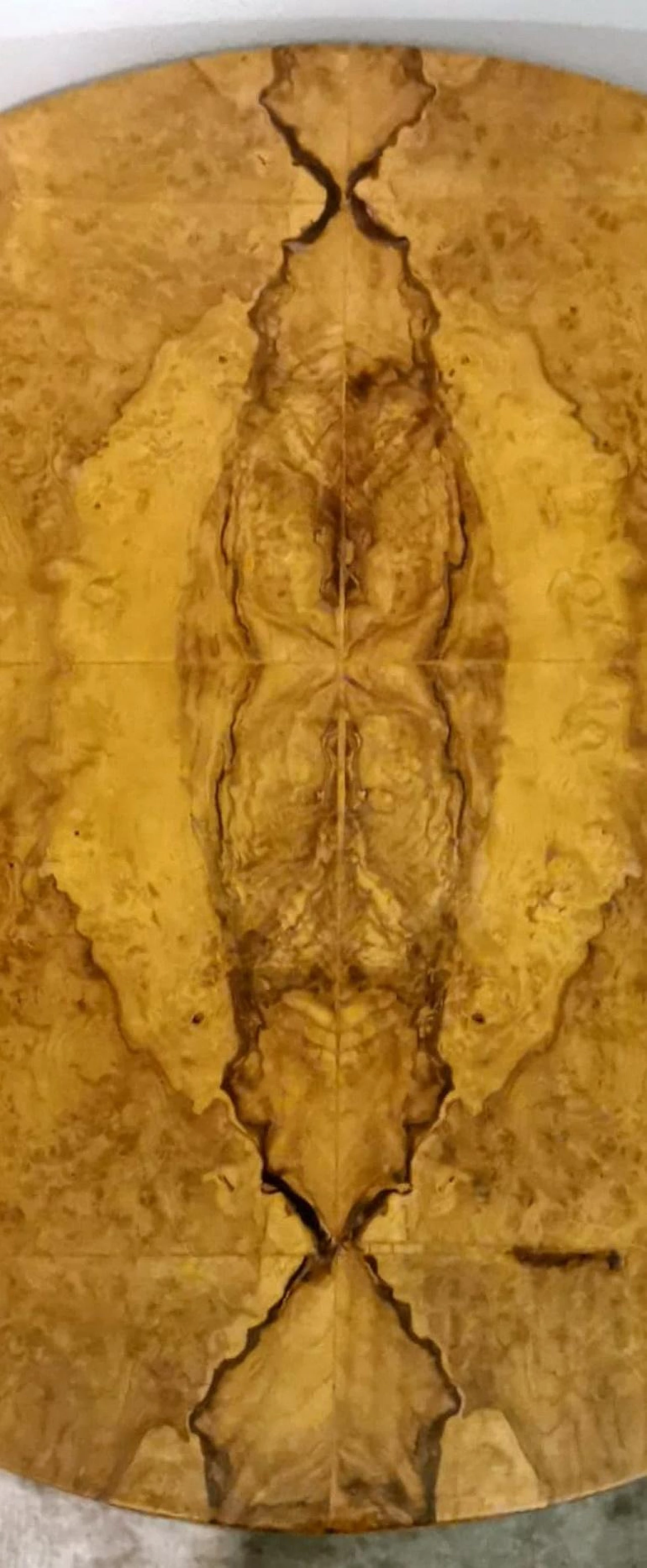


















A refined and elegant Austrian Art Deco coffee table in blond walnut. It has a very clean and linear form, aesthetically refined and pleasing. The round top is supported by curved legs that join at the bottom on a solid cross-shaped base, giving the whole an excellent stability; a black wooden ball has been placed at the junction of the legs, emphasising the Art Deco style even more. The coffee table was made between 1930 and 1935 in a craft workshop in Riegersburg, a small Austrian municipality in the Südoststeiermark district of Styria, which is famous for its furniture production, a limited but high quality production. The distinctive and unique element of the coffee table is the wood with which it has been veneered: blond walnut. Walnut wood (Juglans regia) is a valuable and expensive wood, and the 'blond walnut' variety is even more so; it is characterised by a light colour with shades tending towards yellow, warm tones and very pronounced grain, qualities that are highly valued in the luxury furniture sector. Blond walnut is a hardwood; its nuances, flames and grains have been appreciated for centuries. Blond walnut furniture is highly sought after but also expensive because the proportion of usable wood in each plant is very small. Veneering is an ancient woodworking technique involving the application of a thinner layer of fine wood on a substrate of normal quality walnut wood. Precious walnut wood is harvested from trees specially cultivated for this purpose, which is then cut into thin sheets varying in thickness from 1 to 2 millimetres. The base wood is prepared by applying a special glue, then the high-quality walnut sheets are applied manually and evenly. After this process, everything is pressed and left to dry, allowing the glue to adhere firmly between the high-quality walnut wood and the substrate, creating a stable veneer. Once dry, this is finished by sanding, polishing and application of protective finishes, such as varnishes or oils, to improve the appearance and durability of the wood. The history of cladding goes back many centuries, it is believed to have first been used in ancient Egypt and China. Over the centuries, this technique has spread throughout the world and continued to evolve, becoming an important part of the production of high-quality furniture, luxury goods and objets d'art. This ancient technique, applied to this coffee table, has made it possible to enhance the colours, flaming and grain of the precious walnut. The craftsmen who worked on this coffee table have succeeded in creating an extraordinary, refined and fascinating piece of furniture, extraordinary and unique, capable of communicating suggestions of times gone by, of tradition and functionality. It has been hand-restored by our team of craftsmen and is in perfect condition.
ID: 4672-1711881195-86931
